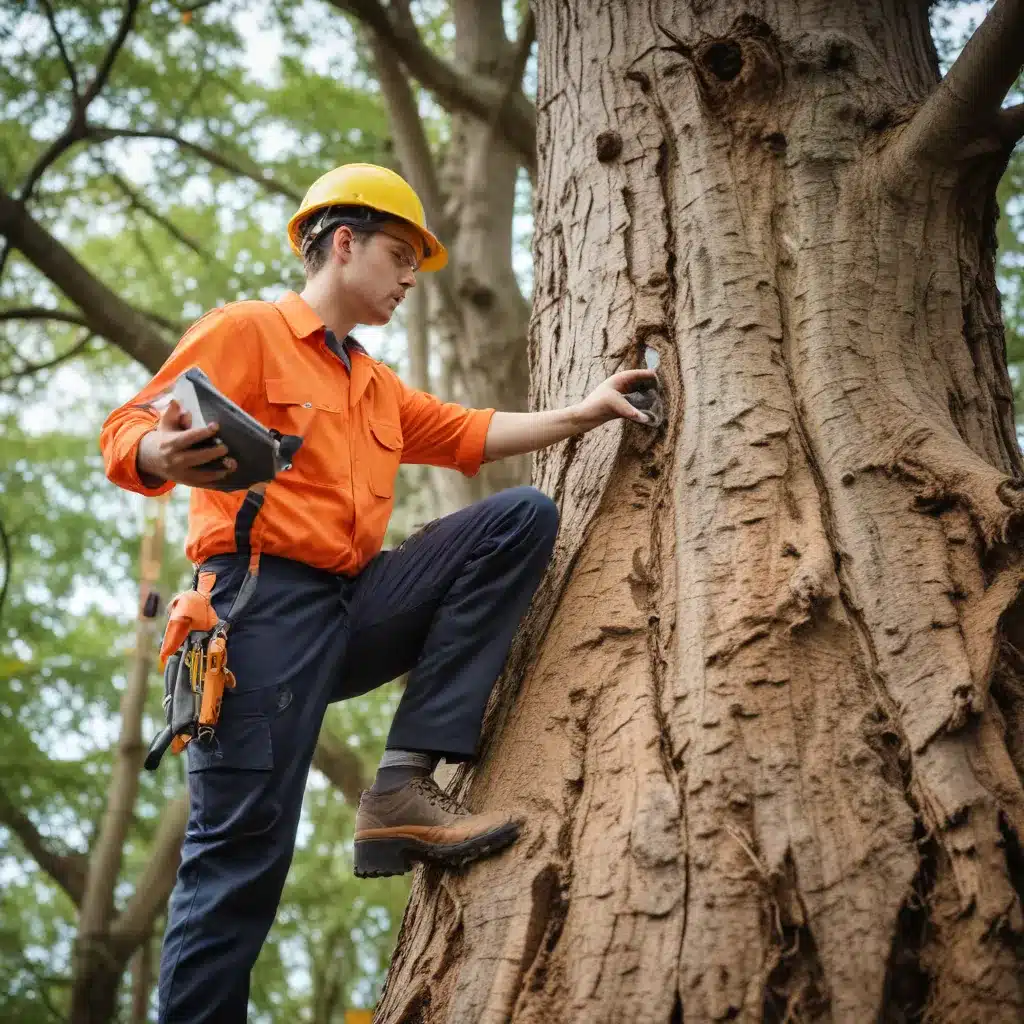
As a property owner, the trees on your land represent a significant investment. Beyond their aesthetic appeal, these living assets provide valuable ecosystem services, enhance property values, and contribute to the overall well-being of your community. However, the very trees that enrich your surroundings can also pose potential hazards if their health and structural integrity are not properly evaluated. This is where professional tree risk assessments become an essential tool in safeguarding your investment.
Tree Risk Factors
The stability and health of a tree, as well as the environmental conditions it faces, are the primary factors that determine its risk profile. A certified arborist, trained in Tree Risk Assessment Qualification (TRAQ), meticulously examines each tree to identify any structural weaknesses, signs of disease or decay, and the influence of external factors like soil composition, moisture levels, and nearby construction.
Tree Stability
The structural integrity of a tree is paramount in assessing its risk. An arborist will closely inspect the trunk, branches, and root system for indicators of instability, such as cracks, decay, or imbalanced growth. This evaluation helps determine the tree’s likelihood of catastrophic failure during severe weather events or under the strain of its own weight.
Tree Health
The overall vitality of a tree is a crucial consideration. Arborists examine the foliage, bark, and other visible signs to identify potential disease, pest infestations, or nutrient deficiencies that could compromise the tree’s structural soundness and longevity. By addressing these issues proactively, the risk of structural failure or premature decline can be significantly reduced.
Environmental Conditions
The surrounding environment can also play a significant role in a tree’s risk profile. Factors like soil quality, drainage patterns, and the presence of competing vegetation are evaluated to determine their impact on the tree’s overall health and stability. Arborists may also assess the proximity of the tree to buildings, utilities, or high-traffic areas, as these factors can increase the potential for property damage or personal injury.
Benefits of Professional Assessments
Entrusting your trees to the expertise of certified arborists through regular risk assessments offers a multitude of benefits that safeguard your investment and promote the long-term well-being of your property.
Identification of Hazardous Trees
By conducting a thorough evaluation, arborists can identify potentially hazardous trees before they pose a threat to your property or the safety of your loved ones. This proactive approach allows for timely interventions, such as pruning, cabling, bracing, or even selective removal, to mitigate the risks.
Mitigation of Liability
In the event of a tree-related incident, such as property damage or personal injury, having a documented tree risk assessment can serve as valuable evidence that you have fulfilled your duty of care as a property owner. This can help minimize your legal exposure and financial liability, providing an added layer of protection for your investment.
Preservation of Property Values
Well-maintained, healthy trees are known to enhance property values significantly. By regularly assessing the condition of your trees and implementing the necessary care and maintenance recommendations, you can ensure the longevity and aesthetic appeal of your landscape, ultimately preserving the value of your investment.
Investment Protection
Protecting your investment in the trees on your property is a multifaceted endeavor that encompasses safeguarding your property, maintaining the health of your trees, and considering the broader liability implications.
Safeguarding Property
Trees can pose a significant risk to your property, from damaging structures to disrupting landscaping investments. By identifying potential hazards through a professional risk assessment, you can take proactive measures to mitigate these risks, ensuring the safety and integrity of your buildings, hardscapes, and other valuable assets.
Maintaining Tree Health
Regular tree risk assessments also enable you to stay ahead of potential disease, pest infestations, or structural issues that could compromise the health and longevity of your trees. Arborists can provide tailored recommendations for pruning, fertilization, and other preventive treatments to keep your trees thriving and resilient.
Liability Considerations
The responsibility of maintaining a safe environment for your property and its occupants extends beyond just physical protection. It also includes navigating the legal and financial implications associated with tree-related risks.
Legal Requirements
As a property owner, you have a duty of care to ensure the safety of your land and the individuals who access it. Failure to identify and address potential tree hazards could result in legal liability in the event of an incident. Familiarizing yourself with local regulations and ordinances regarding tree management is crucial to fulfilling your obligations.
Insurance Implications
Incorporating tree risk assessments into your property management strategy can also have a positive impact on your insurance coverage. By demonstrating your proactive approach to risk mitigation, you may be able to secure more favorable policy terms and potentially reduce your premiums, further protecting your investment.
Sustainable Tree Management
Effective tree risk management extends beyond just the immediate concerns of your property. It is a long-term, sustainable approach that considers the inherent value of your trees and their role in the broader ecosystem.
Long-Term Planning
Treating your trees as valuable assets, arborists can help you develop a comprehensive management plan that accounts for their replacement, succession, and asset valuation. This holistic approach ensures the continuity of your landscape’s health and aesthetic appeal, even as individual trees mature or require replacement.
Ecosystem Services
Trees provide a wealth of ecosystem services that benefit both your property and the surrounding community. From carbon sequestration and stormwater mitigation to urban cooling and habitat creation, maintaining the health and longevity of your trees through regular risk assessments contributes to a more sustainable and resilient environment.
In conclusion, safeguarding your investment in the trees on your property is a multifaceted endeavor that requires the expertise of certified arborists. By regularly conducting professional tree risk assessments, you can identify potential hazards, mitigate liability, and preserve the long-term health and value of your landscape. Invest in the future of your property by partnering with TriCounty Tree Care – your trusted resource for comprehensive tree care and risk management solutions.


